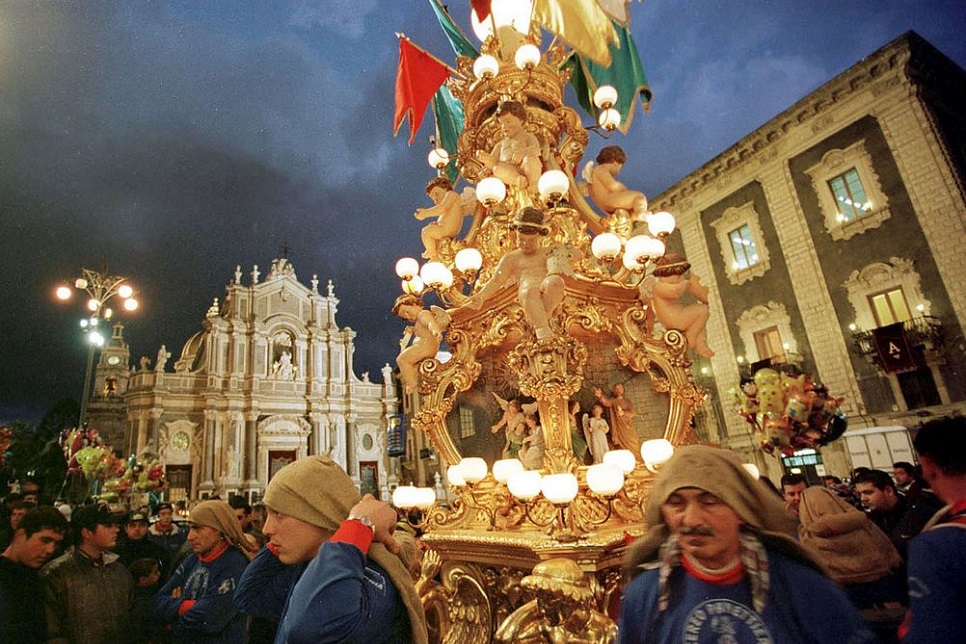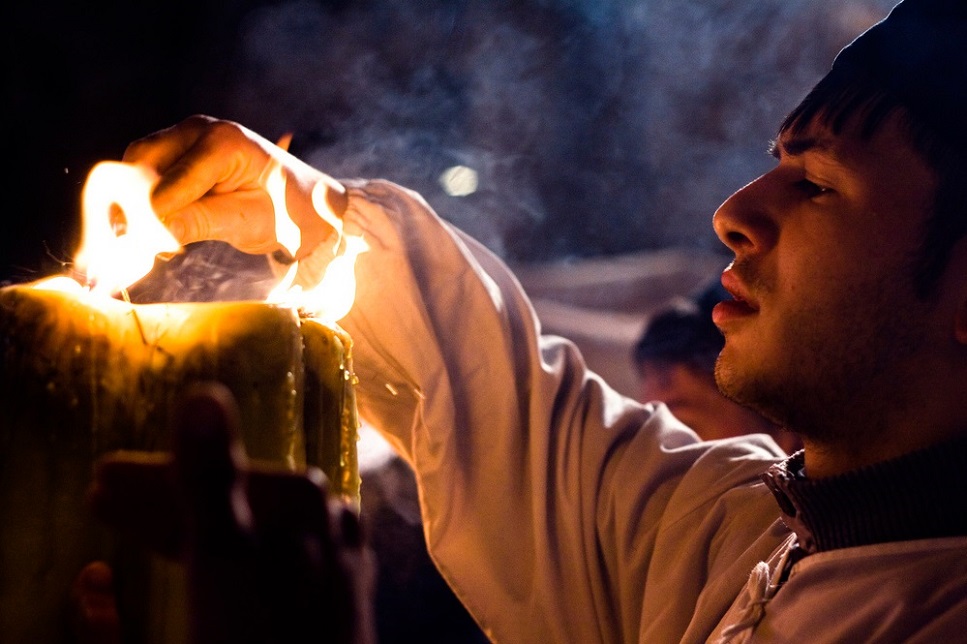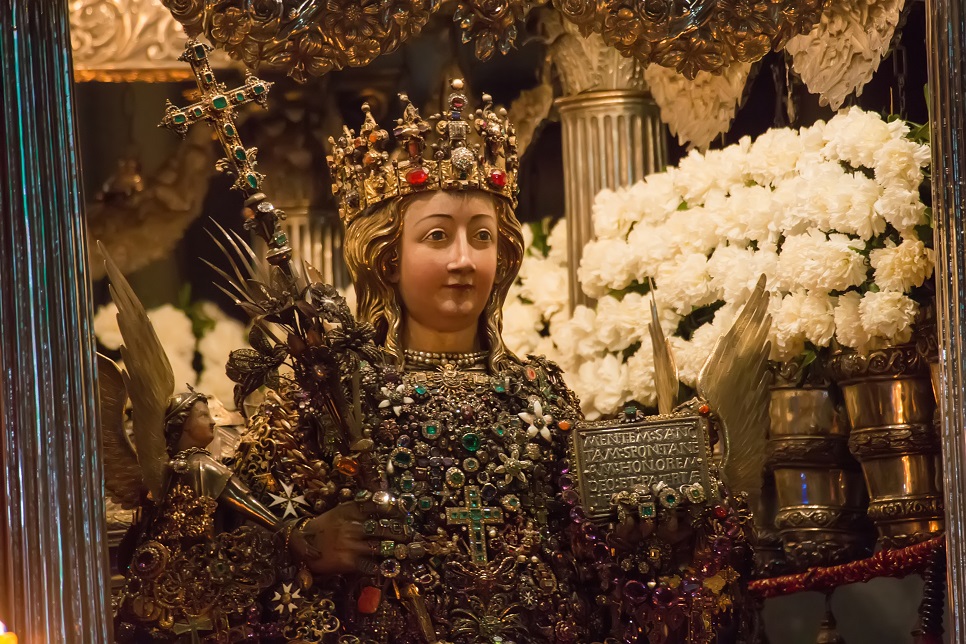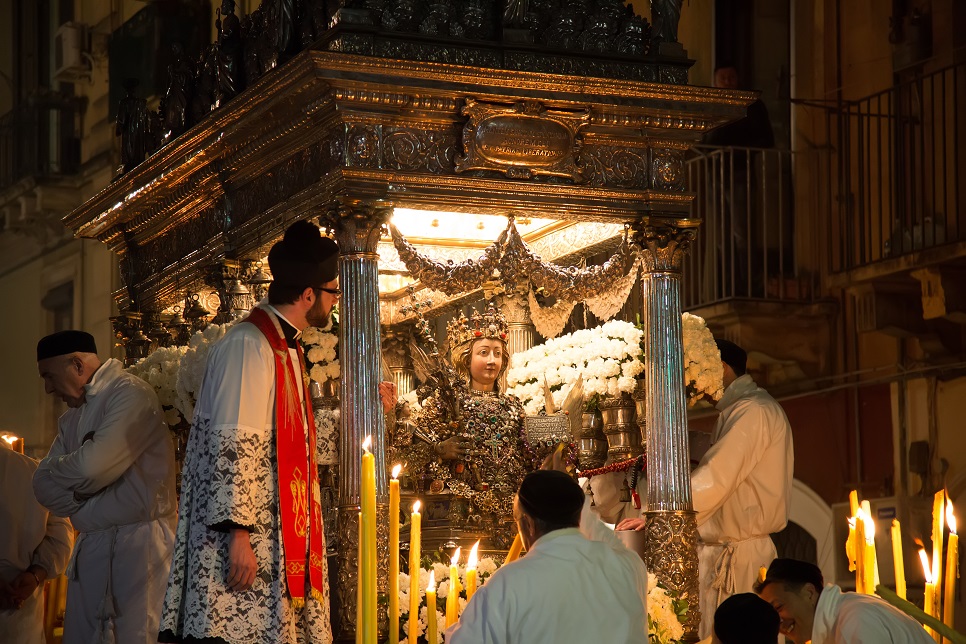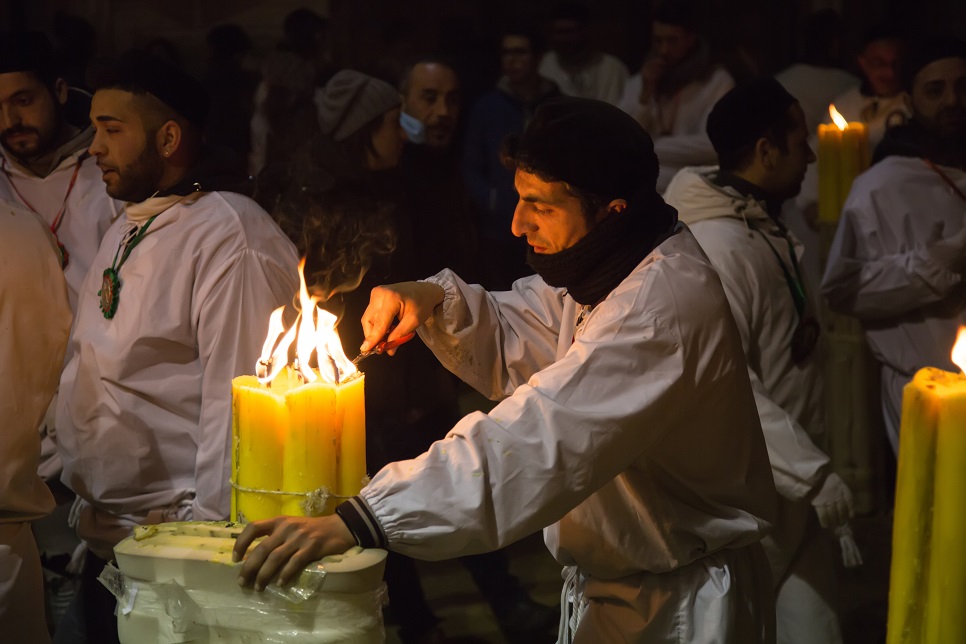St. Agata festival
500 years of celebrations
The Festival of Sant’Agata Catania's patron saint, from 3-5 February, is the most important event in the city’s calendar. The celebrations are attended by the whole city, with tens of thousands flocking into the city from elsewhere as an expression of devotion and to simply enjoy an extraordinary atmosphere. Unsurprisingly, food plays its part, with street vendors selling savoury and sweet treats including the mini breast-shaped cassatella sponge cakes, called minnuzzi ri Sant’Ajita (breasts of Sant’Agata).
Kicking off on 3 February, the festival commences with the procession of the cannalori, eleven hefty gilt encased candles, through the streets of the city to the Piazza Duomo where a concert and fireworks display concludes the day. The second day of the festival, the day on which Sant’Agata’s statue is carried through the Cathedral and the city streets, is the most important for many. The procession pauses at various points throughout the city, such as the Church of Sant’Agata all Fornace, returning the statue to its resting place in the Cathedral at the end of the day. On the final day, the statue is taken on another tour of the city, past the Church of Sant’Agata al Borgo and back down to the bottom of Via San Giuliano. The final leg of the procession is a speedy sprint up Via San Giuliano, symbolic of the strength and devotion of the statue bearers in spite of their heavy load – followed by a final fireworks display.
Who was Sant’Agata? As a teenager from a wealthy family, Sant’Agata decided to devote her life to God. When she rejected the marriage proposals of the Roman Proconsul Quintianus, she became subject to a campaign of religious persecution which culminated in being rolled on hot coals and having her breasts amputated. She subsequently died on 5 February 251 and soon after, became a cult figure and a symbol of Sicily’s struggle against its Roman oppressors. In fact, she is celebrated twice a year, firstly at the February festa, and then again on 17 August, marking the return of her mortal remains from Constantinople to Catania in 1126.


